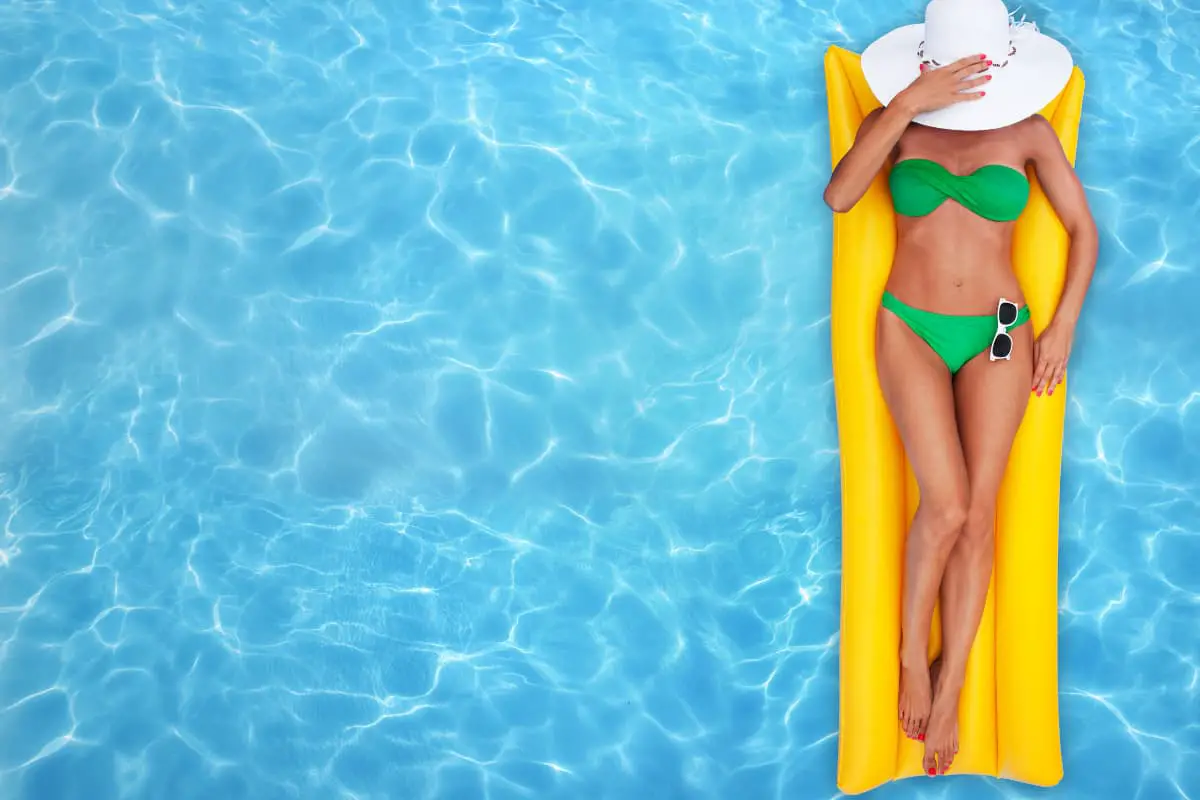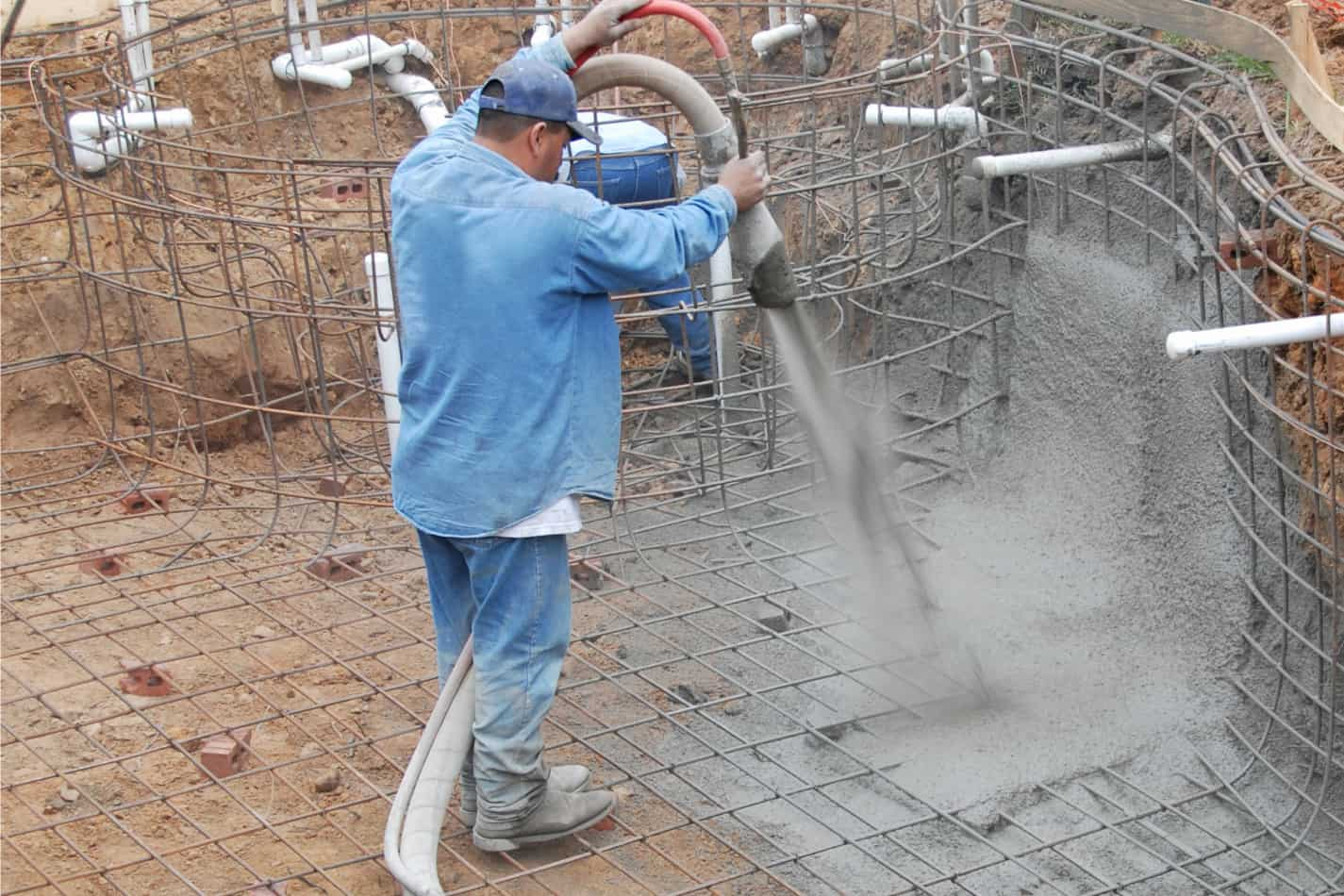Beneath the Surface: Exploring Pool Float Construction

As an Amazon Associate I earn from qualifying purchases.
Ever wondered what lies beneath the surface of those vibrant and buoyant inflatable pool floats?
The composition of these summertime staples goes beyond mere air and whimsical designs. With a blend of materials carefully selected for both function and form, the secrets of their construction may surprise you.
From the sturdy base material to the intricate details that make them stand out, each component plays a crucial role in ensuring your poolside relaxation.
Get ready to uncover the layers that make these floating companions not just fun but also durable and safe for your aquatic adventures.
Key Takeaways
- Inflatable pool floats are primarily made of durable vinyl and PVC materials for flexibility and cost-effectiveness.
- Construction includes heat sealing for airtight seams, reinforced valves for buoyancy, and UV-resistant coatings for protection.
- Design aspects focus on aesthetics through various printing and coating techniques for durability and visual appeal.
- Manufacturing processes involve cutting, shaping, welding seams, adding valves, and ensuring quality control for safety and longevity.
Vinyl: The Base Material
When choosing inflatable pool floats, vinyl serves as the primary material due to its durability and flexibility. Vinyl, a synthetic material, offers excellent properties for pool float manufacturing.
Its water-resistant nature makes it ideal for pool use, preventing water absorption that could lead to mold or mildew. Additionally, vinyl is known for its strength, providing a sturdy structure for the float.
The manufacturing process of vinyl inflatable pool floats involves using a method called heat sealing. In this process, two pieces of vinyl are welded together using heat to create airtight seams.
This ensures that the float remains inflated while in use. The vinyl material is also treated with UV protectants to prevent damage from the sun’s rays, extending the life of the pool float.
PVC: A Common Alternative
PVC commonly serves as an alternative material for inflatable pool floats due to its versatility and cost-effectiveness in manufacturing processes. Polyvinyl chloride (PVC) is a synthetic plastic polymer made from 57% chlorine and 43% ethylene.
While PVC has been criticized for its environmental impact and potential health hazards during production and disposal, advancements have been made to address these concerns. Manufacturers now offer eco-friendly options such as phthalate-free PVC, which reduces chemical exposure risks.
Despite these improvements, sustainability concerns remain due to PVC’s non-biodegradable nature. When selecting PVC inflatable pool floats, consider the chemical composition and any potential health hazards associated with the material.
Look for products labeled as eco-friendly or free from harmful additives to minimize environmental and health risks.
While PVC remains a popular choice for its affordability and versatility, it’s essential to balance these benefits with awareness of its impact on the environment and health.
Fabric Coatings: Enhancing Durability
When considering fabric coatings for inflatable pool floats, reinforcing the fabric’s strength is crucial in preventing potential wear and tear.
By enhancing the overall durability of the material, these coatings extend the lifespan of the pool float, ensuring long-lasting enjoyment.
Selecting the right fabric coatings can significantly improve the float’s resilience against various environmental factors, making it a reliable choice for your pool activities.
Reinforcing Fabric Strength
To enhance the durability of inflatable pool floats, reinforcing fabric strength through fabric coatings is a critical aspect that ensures longevity and reliability in use. Fabric reinforcement plays a vital role in increasing the overall strength and longevity of the float.
By applying specialized coatings to the fabric, manufacturers can enhance the material’s resistance to wear and tear, UV exposure, and water damage.
These coatings act as a protective barrier, shielding the fabric from environmental factors that could otherwise lead to deterioration.
Preventing Wear and Tear
Reinforcing fabric strength through specialized coatings is imperative for preventing wear and tear on inflatable pool floats and enhancing their overall durability.
To maintain cleanliness and prevent mildew, ensure the float is completely dry before storage. Mildew thrives in damp conditions, so storing a clean and dry float is crucial.
When storing, avoid folding the float too tightly, as this can lead to creases that weaken the fabric over time. Store the float in a cool, dry place away from direct sunlight, as UV rays can degrade the fabric.
By following these storage guidelines and keeping the float clean and dry, you can significantly extend its lifespan and prevent premature wear and tear.
Enhancing Overall Longevity
Enhance the overall longevity of inflatable pool floats by utilizing specialized fabric coatings to improve durability and resist wear and tear. Here are some ways to enhance the durability of your pool float:
- UV Protection: Apply a UV-resistant coating to prevent sun damage and fading.
- Waterproofing: Use a waterproof coating to protect the fabric from water exposure, preventing mold and mildew.
- Abrasion Resistance: Choose a coating that enhances the float’s resistance to scratches and abrasions, increasing its lifespan.
- Easy Cleaning: Opt for a coating that makes cleaning easier, allowing for simple maintenance tips to keep the float in top condition for prolonged use.
Air Chambers: Providing Buoyancy
Air chambers in inflatable pool floats play a crucial role in providing buoyancy. The material used for these chambers directly impacts the float’s ability to stay afloat.
Understanding the importance of air retention and the durability of these chambers is essential for ensuring a safe and enjoyable experience in the water.
Material for Buoyancy
Utilizing specialized materials in the construction of inflatable pool floats is crucial for ensuring optimal buoyancy within the air chambers.
Here are four key materials that contribute to buoyancy:
- High-Density PVC: This durable material forms the main structure of the float, providing a sturdy base for the air chambers.
- Vinyl Coating: Applied to the PVC, this coating enhances the float’s resistance to punctures and tears, maintaining the integrity of the air chambers.
- Air-Tight Valves: These components are crucial for keeping the air chambers inflated, ensuring consistent buoyancy.
- Reinforced Seams: Double-stitched seams along the edges of the float prevent air leakage, maintaining buoyancy over time.
Importance of Air
When considering the buoyancy of inflatable pool floats, the composition of air chambers plays a vital role in achieving optimal floatation. The air pressure within these chambers creates buoyant force, allowing the float to support your weight on water.
The key to maintaining buoyancy lies in the proper inflation of these air chambers. By regulating the air pressure within the chambers, you control the float’s ability to stay afloat.
Too much air can lead to excessive buoyancy, causing instability, while too little air can compromise the float’s ability to support you effectively.
Understanding the relationship between air pressure and buoyant force is crucial in ensuring a safe and enjoyable pool experience with your inflatable pool float.
Durability of Chambers
To ensure the optimal buoyancy and longevity of inflatable pool floats, the durability of the air chambers is a critical factor to consider.
Proper chamber maintenance and repair techniques are essential for keeping your pool float in top condition. Here are four key aspects to focus on:
- Material Quality: Opt for floats with high-grade PVC or vinyl chambers for increased durability.
- Seam Strength: Check for reinforced seams to prevent air leakage and ensure longevity.
- Valve Integrity: Regularly inspect valves for any signs of wear or damage and replace if needed.
- Patch Application: Learn how to apply patches correctly to repair any punctures promptly and extend the life of your float.
Valve Systems: Ensuring Easy Inflation
One crucial element in the design of inflatable pool floats that ensures easy inflation is the efficient implementation of specialized valve systems.
Valve systems are vital components that allow for the seamless inflation and deflation of the float. These systems come in various types, such as pinch valves or Boston valves, each offering different benefits in terms of ease of use and air retention.
Pinch valves are user-friendly, requiring a simple pinch to open or close, while Boston valves provide a two-way seal that prevents air leakage during inflation.
Efficient valve systems contribute significantly to the durability of inflatable pool floats. By facilitating quick and straightforward inflation techniques, they reduce the strain on the float’s material, minimizing the risk of tears or punctures during the inflation process.
Additionally, the easy maintenance of these valve types ensures that users can quickly inspect and clean the valves, prolonging the lifespan of the float. Overall, the careful selection and implementation of valve systems play a crucial role in enhancing the functionality and longevity of inflatable pool floats.
Designs and Prints: Adding Flair
Efficient valve systems not only contribute to the functionality of inflatable pool floats but also serve as a foundation for enhancing their designs and prints, adding flair to the overall aesthetic appeal.
When it comes to adding patterns and custom designs to inflatable pool floats, manufacturers employ various techniques to create visually appealing products.
- Digital Printing: Utilizing advanced digital printing technology allows for intricate and detailed designs to be reproduced accurately on the float’s surface, ensuring vibrant colors and sharp images.
- Screen Printing: This technique involves transferring designs onto the float through a mesh screen, enabling the application of specific patterns or logos with precision and consistency.
- Heat Transfer: By using heat transfer methods, manufacturers can apply custom designs onto the float’s surface, ensuring durability and resistance to fading over time.
- Hand Painting: For unique and artistic designs, hand painting offers a personalized touch, allowing for intricate details and customization that set the float apart from mass-produced designs.
Conclusion
Inflatable pool floats are primarily made of vinyl or PVC materials, with fabric coatings for added durability. The air chambers provide buoyancy, while valve systems allow for easy inflation.
The designs and prints add flair to these fun and practical pool accessories. Overall, the construction of inflatable pool floats combines different materials and components to create a product that’s both functional and visually appealing for users to enjoy.

